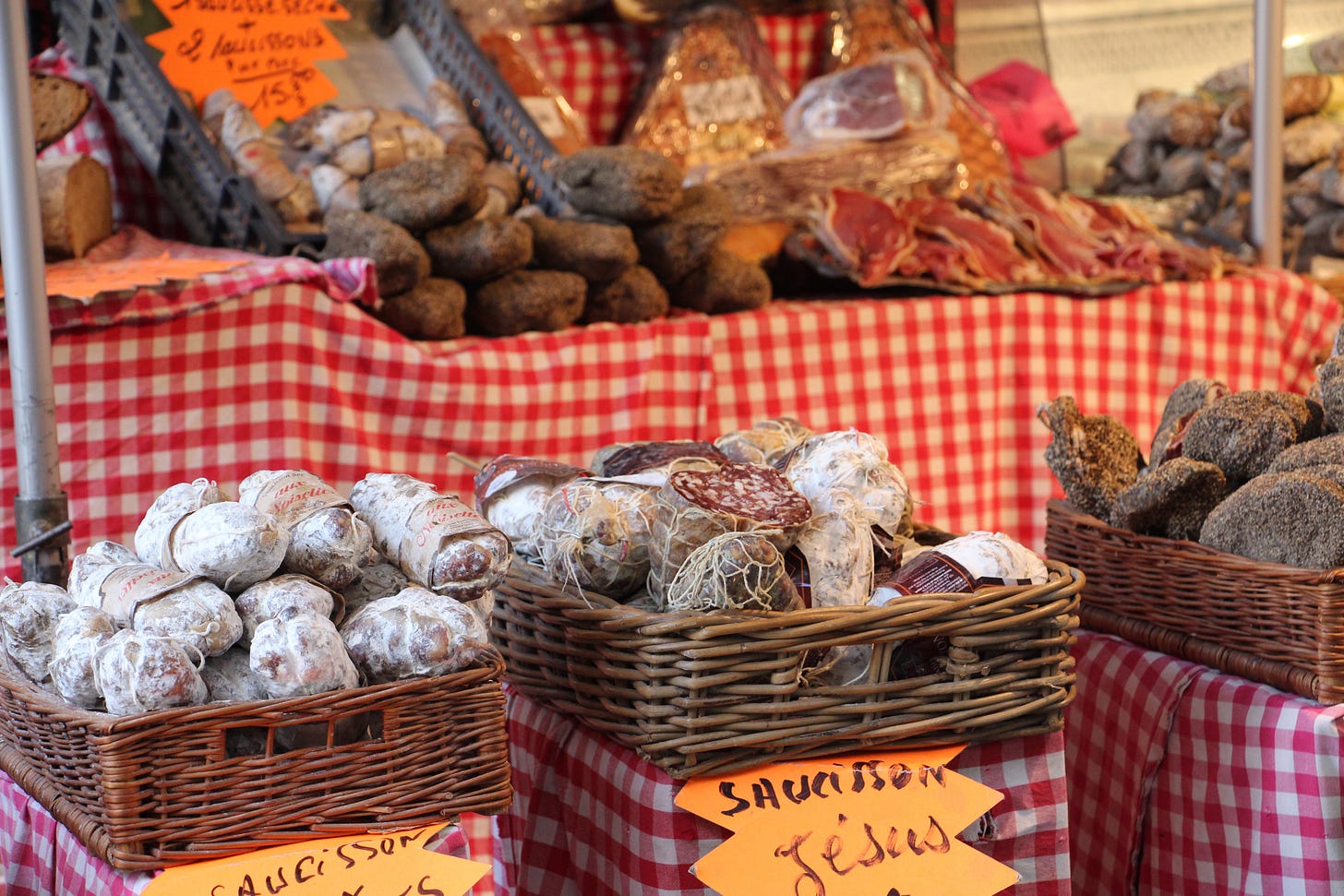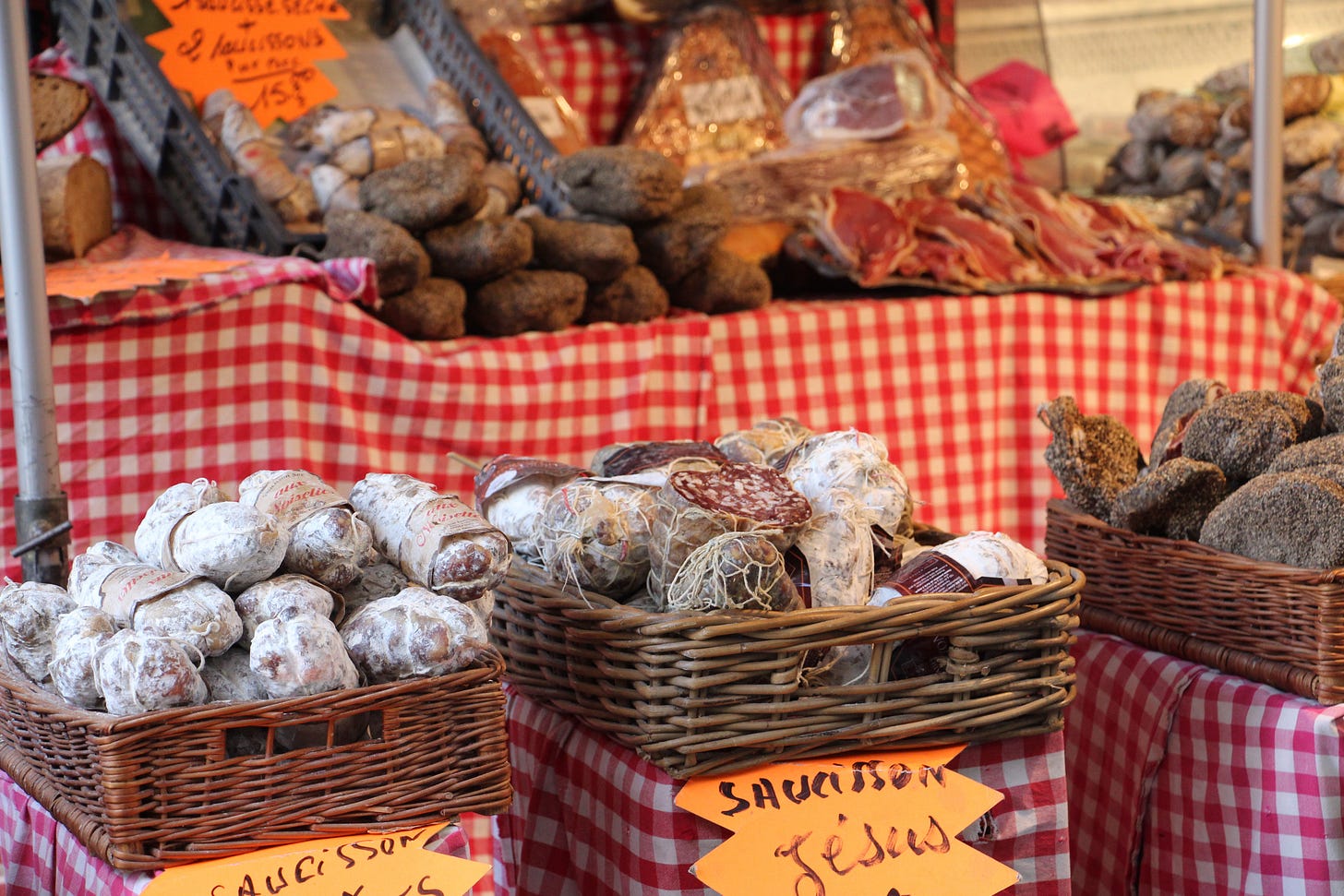When I first became a tour guide, I knew relatively little – about Paris’ history and its architecture, about which king built what palace or which writer started a brawl in which café. Luckily, my first job came with a script; whether at the Louvre or the Eiffel Tower, my words were not my own. My first summer season, my speech was so perfectly timed that I knew precisely which step of the Palais Chaillot staircase my foot would hit as I evoked Gustave Eiffel for the first time.
I quickly got sick of this sort of rote tour, my words becoming automated, robotic. I recall some days, after accompanying my third group of the day up the Tower’s massive elevator, becoming suddenly uncertain as to whether I'd told a certain story to these particular eager faces. It wasn't fair, and it wasn't fun. I’m glad my tours are not scripted anymore.
That said, with over ten years of guiding under my belt, there are some phrases that come out fully formed, much in the way, I'd guess, stand-up comics find jokes emerging in the same cadence night after night. One of them has to do with outdoor markets, of which Paris counts more than 80. In the U.S., we dub these farmer’s markets; here in Paris, we simply call them les marchés – a simpler and far more apt moniker, seeing as there are few farmers at our markets, which pop up daily (save Monday), thus precluding the farmer from doing the farming that is his or her very livelihood.
I typically don't shop at outdoor markets all that often. I’ve got a great covered one near me, the Marché Saint-Quentin, with which those who have taken food tours with me may be familiar, not to mention a wonderful high street boasting a fishmonger, a cheesemonger, a caviste, and a great fruit-and-veg shop. But after reading Kate Hill’s musings on her early market adventures this week, I started thinking about my own marketing past.
I remember one of the rare producteurs at my market on boulevard Lefebvre, on the outskirts of the 15th, who grew strawberries in spring, tomatoes in summer, potimarron in fall, and one September, all three at once, all without the use of any pesticides or herbicides save nettles. He offered me a jacket when I turned up defiantly still sporting a summer dress and sandals to buy a bit of everything, throwing in a bunch of basil he'd taken from his van the moment he saw me coming. I fell a little bit in love with him every Saturday morning and forgot about him by the time I made it home at noon.
I remember, years earlier, becoming a regular at the market beneath the elevated line 6 métro, between Dupleix and La Motte Picquet, where I bought eggs by the 30-piece flat for an ex who would eat four or five at once, fried in butter by yours truly. I don't remember my produce vendor there, but I do remember the shame I felt when, the week after my eye – and wallet – were drawn to early asparagus at a competing stall, I found a rotten clementine at the bottom of my bag.
I remember frequenting the Place Monge market when I lived in a flat straddling the 5th and the 13th; I remember buying a massive bag of fresh spring peas there, only to field a veritable slew of unsolicited but welcome advice on how to cook them – and to contend with mutual bafflement when we all realized that mint and peas are a far from universal pair.
I remember my fishmonger at that still-same market, who would insist, each week, that he needed an American wife, who was the very first to tell me, when I ordered salmon, “Oh, no, you don’t want that.”
“What do I want, then?” I asked, blooming into the possibility afforded by his naysaying, somehow understanding without being told that this was an invitation to converse, a non that opens doors rather than closing them.
On the rare occasions I visit an outdoor market these days, it’s usually the one at Place Maubert, home to one of my favorite cheese purveyors, as I recently shared in a story for the BBC. My article is plastered all over his windows, and he’s generous with free samples of tomme de brebis, a milky ewe’s tomme with a lovely lanolin funk. The market is also home to two maraichers, producers of seasonal vegetables including some of the ugliest and most delicious apples I've ever seen.
My brother was in town last week, which led me to spend even more time in markets than usual, enjoying spring’s bounty. We gobbled up the first gariguette strawberries, comparing them with new cléry and mara des bois. We marveled over the fat white asparagus and pencil-thin green ones, even encountering wisps of wild ones at one stand in particular.
Now that he's gone, I find myself back in my old routine, although the arrival of sunshine, at last, is making me miss the slow meander of weekday marketing – and making me realized, abashedly, that I’m not sure where my closest one is.
Luckily, this is Paris, which means no matter where you are, a morning market is never more than a few minutes away.
Cheese of the Week
Wensleydale is a British territorial cheese, alongside familiar faces like cheddar and stilton. Originally developed by French (gasp) monks who had moved from Roquefort to settle in Yorkshire, the original Wensleydale was far more similar to the eponymous ewe’s milk cheese the monks made back home. But these days, most iterations, including this raw milk version from Stonebeck in Nidderdale, are white, cow’s milk cheeses, beloved for their moist, crumbly texture and floral, almost honeyed aromas. Rich and creamy with lingering flavor, this is a cheese that lasts in more ways than one.
To discover more of my favorite cheeses, be sure to follow me on Instagram @emily_in_france, subscribe to my YouTube channel, and tune into the Terroir Podcast, where Caroline Conner and I delve into France's cheese, wine, and more one region at a time.
What I’m Eating
Nonette is a long-standing personal favorite for banh mis and donuts, which meant it was a no-brainer to pay them a visit when I fixed a shoot for Milk Street on Southeast Asian street food. And you know that when I got the chance to sample their new spring menu, I pounced. More on the blog.
Where I’m Going
1. To Le Saint-Sébastien, which has long been one of my favorite restaurants in Paris, to sample the new menu from former sous-chef, now chef, Andres Solis.
2. To Martin, an even longer-standing fave, to celebrate the birthday of one of my dearest friends.
3. To Notre Dame, to check up on the renovations and to show around some first-timers on a tour of central Paris.
What I’m Saying
France is synonymous with its food culture, but with a rise in foodies in the U.S., how does France's stand out? On this week’s episode of Navigating the French, I’m discussing the French attitude towards food from a cultural standpoint with Diane Rovner, a former food magazine editor, food tour guide, and founder of Bordeaux in Bites, who’s helping me navigate the connotations of gourmet.
What I'm Writing
1. In the heart of France, in the heart of the Massif Central, in the heart of Lozère, the calcium plateau of the Causse Méjean boasts a truly unique terroir, surrounded by gorges and caves, streaked with rivers and creeks, positively perfect for raising hardy sheep. For My French Life.
2. From the archives: It feels odd to mourn a building, but Notre Dame is more than a building–it’s a symbol of one of the greatest cities in the world. For those of us who have been lucky enough to call Paris home (if only for a short while) and for those who have only visited in their dreams, Notre Dame is the heart of the city. It’s a monument that transcends religion and transcends nationality in order to honor art, culture, and history. For Fodor’s.
3. From the archives: “One two three four five six seven. Automatic now. She couldn’t even remember when the tic started, but it helped, a bit. One two three four five six seven. Earring, earring, cartilage, tragus, nose, labret, ring. She had it down so that it looked like she was just brushing her hand across her face, like she had an itch somewhere but wasn’t sure where.” A short story for The Scream Online.
What I'm Reading
1. I like my historical books ultra readable, and the narrative framing of Wine and War made it a pure pleasure to devour. Centering around a few key characters in Burgundy, Bordeaux, Alsace, and Champagne, this book charts the ways in which winemakers collaborated, resisted, and survived the Occupation, showcasing acts that may be construed as heroic or malicious all the while remaining stalwart in evoking, above all, humanity.
2. This exploration of what it feels like when you transform your passion into your career – and lose the passion for it in the process. In Creative Fuel.
3. This story about niksen, a Dutch term for the art of doing nothing that oddly isn’t all that prevalent in Holland but is particularly appreciated by the French. (No surprise there.) In the Guardian.
A bientôt !















